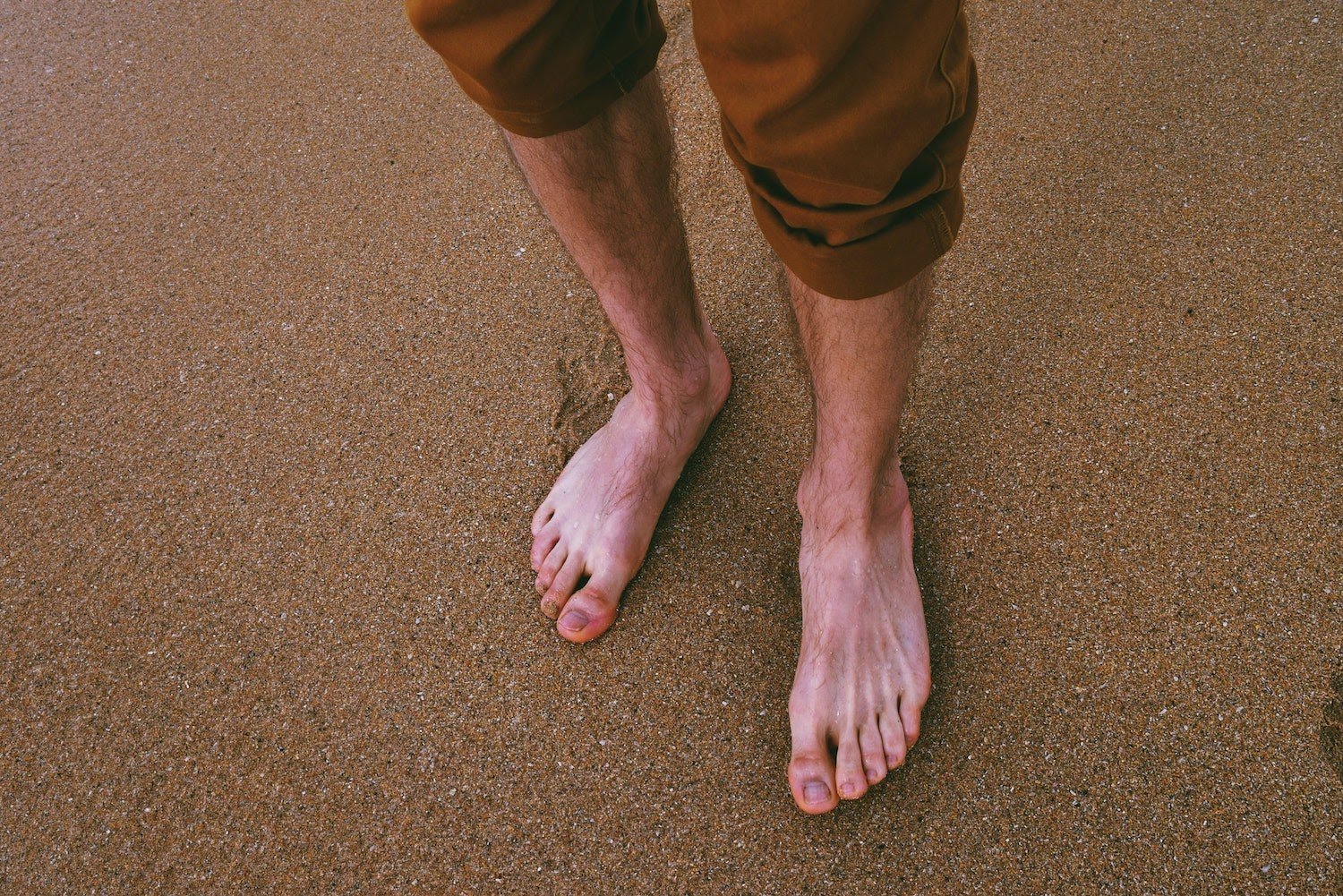
Plantar fasciitis can be a long, grueling road. However, you can cure plantar fasciitis. As much as you want to get back on your feet, the recovery process takes time, patience, and—most importantly—rest. And you can’t slack off on your plantar fasciitis treatment.
Eventually, the day does come when walking around isn’t so painful and the signs of plantar fasciitis start to fade, especially if you have a pair of shoes for plantar fasciitis. This leads people to wonder: how do you know when plantar fasciitis is healed? Jumping back into exercise can be risky, especially if you’re not fully recovered. That’s why it’s so important to recognize the signs of a healthy plantar fascia ligament as well as indications that you’re not quite there yet.
Read on for four signs your plantar fasciitis is healing and everything else you should know about the recovery process!
What is Plantar Fasciitis?
How is plantar fasciitis diagnosed? Recognizing these signs will require a basic understanding of what plantar fasciitis is. Here’s the rundown: plantar fasciitis is an inflammation of the plantar fascia—a ligament that runs along the arch of the foot and attaches to the heel bone. It can be caused by a heel spur. Plantar fasciitis can also involve microtears and hyperextension of the ligament.
Symptoms of this painful condition include:
- Cramping
- A dull, aching pain
- A sharp, stabbing pain
- Tenderness, weakness, and sensitivity of the foot
- Difficulty running, walking, and even standing
- Tightness in the arch of the foot
- Radiating severe heel pain
Now that you have this foundational knowledge in mind, it’s time to focus on a more optimistic subject. Let’s review the signs of plantar fasciitis improving and healing.
Signs Plantar Fasciitis is Healing
#1 Mornings Are Easier
One of the biggest signs plantar fasciitis is healing involves morning pain, or—more specifically—a lack thereof.¹
People with plantar fasciitis often report their worst pain in the morning. Getting out of bed can be difficult with an inflamed plantar. One minute you’re lying peacefully, the next, your foot is on fire after taking that first step. Here’s why:
- Blood flow – When you’re sleeping, blood flow to the extremities isn’t always optimal. Depending on your position, the heart may not be pumping enough blood to the feet for proper healing. This is why the first few steps in the morning can be particularly painful since the area is suddenly filling with blood and rapidly becoming inflamed.²
- Pressure – One of the telltale signs of plantar fasciitis is pain when walking or standing, and no pain during times of rest. After a long night’s sleep, you’ve probably gotten a break from the discomfort of plantar fasciitis. This can make that initial step even more painful, by comparison.
These are the reasons why a pain-free morning can be a promising sign of recovery. If you’ve noticed your first couple of steps each day are getting more manageable, it means you’re probably doing something right. Knowing when to wear compression socks for plantar fasciitis is also key in making your mornings easier. Try wearing compression socks while you sleep.
#2 Pain is Localized
Pain is never fun, but it can provide important information about your body.
One of the most frustrating things about plantar fasciitis is its tendency to spread. Inflammation in the arch can quickly turn to radiate pain throughout the whole foot and even creep up toward the ankle and calf muscle.
Plantar fasciitis can also affect how you walk. This can lead to pain in other parts of the body, including:
- Lower back
- Knees
- Hips
- Other foot
If your other body parts are feeling fine, this can be a good sign in terms of recovery. While no pain is always ideal, localized pain in just the heel of the foot is certainly promising. If you’ve found that you’re able to walk normally without too much pain, this is also a step in the right direction.
#3 Your Range of Motion is Returning
Stretching can be extremely painful when you have severe plantar fasciitis. Inflammation and microtears will make even the slightest ligament movements virtually impossible.
Despite this pain, being able to stretch the foot is important. Stretching can help strengthen the fibers in the plantar fascia and protect the plantar fascia from tearing in the future. Cramping can also occur with plantar fasciitis, so elongating these muscles can help prevent this painful plantar fasciitis symptom.
If you’ve noticed that your range of motion is returning to normal, this is a sign that healing has begun. Although pain may still be present, the ability to stretch the calf, pull the foot toward your chest, and raise your toes are all promising movements for a recovering plantar fascia.

#4 Visible Symptoms are Fading
Serious cases of plantar fasciitis can actually be visible to the naked eye. When this issue first begins, you may notice the following symptoms:
- Bruising – Microtears and hyperextension of the plantar fascia can lead to thinning in the heel pad. With less protection in this area, even regular steps can cause damage to the skin and tissue. Bruising around the heel is a sign of chronic plantar fasciitis. If your bruising has begun to fade and no new bruises have shown up, then the area around your heel is most likely beginning to heal.³
- Swelling – Inflammation typically leads to swelling. When the plantar fascia is inflamed, the arch and heel of the foot can become swollen and tender. This swelling can cause fluid build-up, which may spread to other parts of the foot or ankle. When the swelling goes down, it may be a sign that the body is starting to recover and your anti inflammatory medication is working.
- Tightness – When cramping occurs, the tight plantar fascia may become visible at the bottom of your foot. If this ligament is clearly visible—even when the foot is barely flexed—you may need to apply heat or try some light massage techniques. When cramping and visible tightness has subsided, this means you’re probably on the right track.
If you haven’t experienced these signs of healing just yet, don’t be discouraged. Recovering from plantar fasciitis is a complicated process, and every person’s body is going to react a bit differently. For those who want a possible timeline for their recovery, here’s what the healing process for plantar fasciitis looks like.
How Long Does Plantar Fasciitis Last?
Recovering from plantar fasciitis can take longer than most people would like, especially those who are constantly on the move. The time it takes to heal will vary depending on the severity of your condition, but the average person recovers from plantar fasciitis within 6 months.⁴
Proper plantar fasciitis treatment will be crucial to a speedy recovery. While 6 months may seem like a long time, it’s much shorter than the healing process for foot surgery (which you may need if you don’t allow your body to rest).
To help assist your body’s recovery, you can try a few practices to strengthen the ligament, reduce inflammation, and relieve plantar fasciitis pain.
How To Treat Plantar Fasciitis
While there’s no quick fix for plantar fasciitis, there’s plenty of at-home treatments you can (and should) be doing in the meantime. Here are some of the most common ways people care for their plantar fasciitis:
- Ice – Cool therapy is fantastic for recovery. Cold temperatures have been shown to significantly reduce the body’s inflammatory response, which can help prevent further damage to the ligament. Reducing this inflammation and numbing the area can also relieve pain and make daily tasks much easier.
- Heat – For those who prefer their recovery on the warm side, heat can also be used to treat plantar fasciitis. By using a heating pad or placing your feet in a warm tub, the muscles in your foot will begin to relax. This can help prevent cramping in the feet and legs and allow the body to heal.
- Stretching and massage – Stretching is a smart way to relieve pain, reduce pressure, and strengthen the plantar fascia. Try some gentle calf, arch, and toe stretches each day, and slowly work your way up to a more normal range of motion. Massage is another form of bodywork that can help break up the tense, inflamed fibers in the foot and promote healing (plus, it feels great).
- Analgesics – The fastest way to reduce pain and inflammation is by taking an over-the-counter analgesic. Ibuprofen and acetaminophen are some of the most common and accessible types of pain relief medication, and their anti-inflammatory properties can reduce the risk of further damage to the ligaments and connective tissue.
- Supportive footwear – Plantar fasciitis often occurs when the foot isn’t properly supported. If you’re walking or running in flat-soled shoes, you may be sacrificing the health of your feet. It’s important to have a supportive shoe that provides arch support, cushioning, and stability. If you can’t wear shoes yet, consider wearing orthopedic sandals for men or women.
If you were also wondering, “How to relieve foot pain?” Fortunately, some of these steps can help. Can a chiropractor help with plantar fasciitis? The answer is yes! Chiropractic work can greatly improve your plantar fasciitis symptoms. They focus holistically on your body and focus on spinal adjustments, your lower back, and even feet adjustments.
If you’re wondering how to prevent plantar fasciitis in the future, it may be time to make some serious lifestyle choices. The best way to change the fate of your feet? A pair of Vionic shoes!

Show Your Feet Some Love with Vionic Footwear
Stop plantar fasciitis before it begins with a pair of Vionic shoes! Our patented Vio-Motion technology is used to create all of our products. Whether you’re looking for sandals, high heels, or loafers, you’ll always be comfortable with Vionic.
Our biomechanical footbeds are designed to reduce shock, support arches, and stabilize heels. Everything an orthotic can do, Vionic shoes can do better—and with more style!
Leave foot pain behind, and step your game up with Vionic, today!
Sources:
1.Amitgaglani. “Four Signs Your Plantar Fasciitis is Healing”. Arrow PTR. Jun 6, 2020, https://arrowptr.com/four-signs-your-plantar-fasciitis-is-healing/
2.Jane Chertoff. “Why Do I Have Heel Pain in the Morning?”. Healthline. Oct 29, 2018, https://www.healthline.com/health/heel-pain-in-the-morning#plantar-fasciitis
3.Beth Oller. “What is Plantar Fasciitis?”. Family Doctor. Updated March 2021, https://familydoctor.org/condition/plantar-fasciitis/
4.Mark Paigen. “How Long Does Plantar Fasciitis Last & How to Get Rid of It”. Tread Labs. https://treadlabs.com/blogs/insoles-reach-your-stride/plantar-fasciitis-treatments


Barbara McDonald
Thank you for the insights and recommendations that there is hope for some relief. Looking forward to massage, stretches, night compression and hope for healing. I will check out Vionic footware.